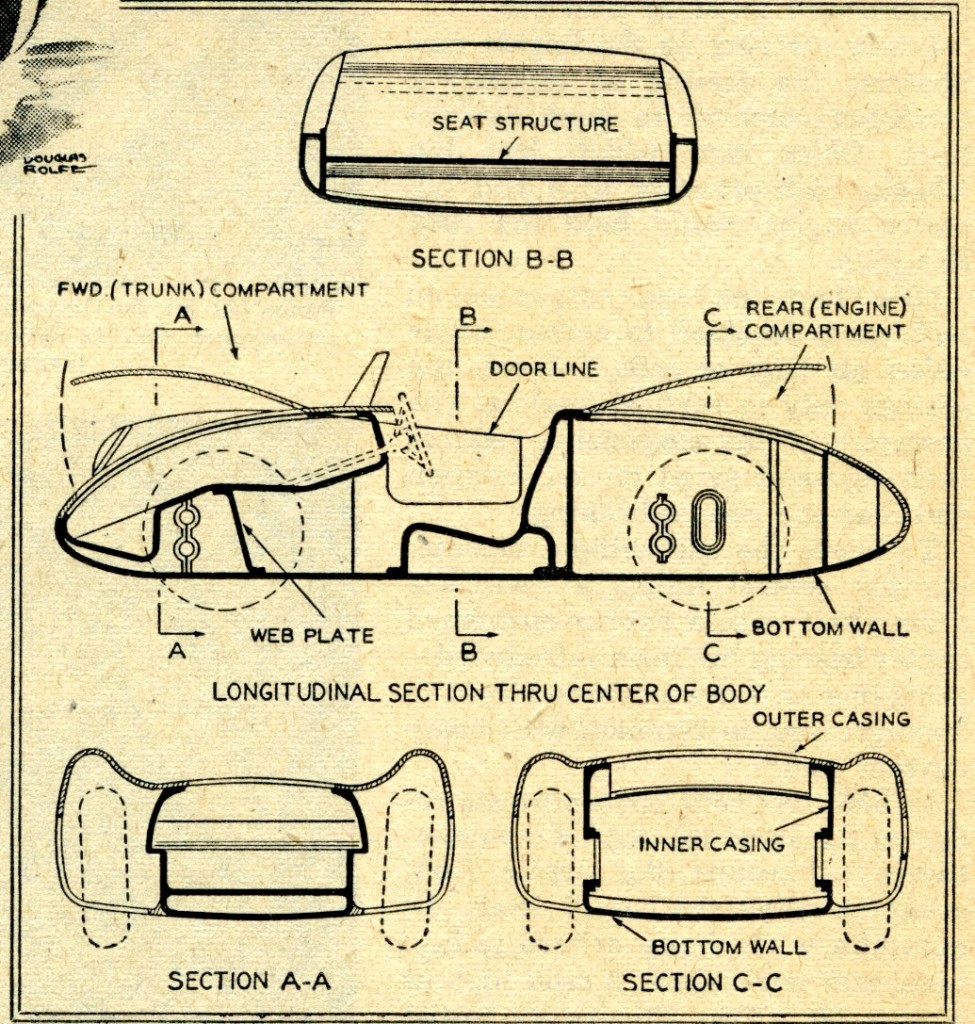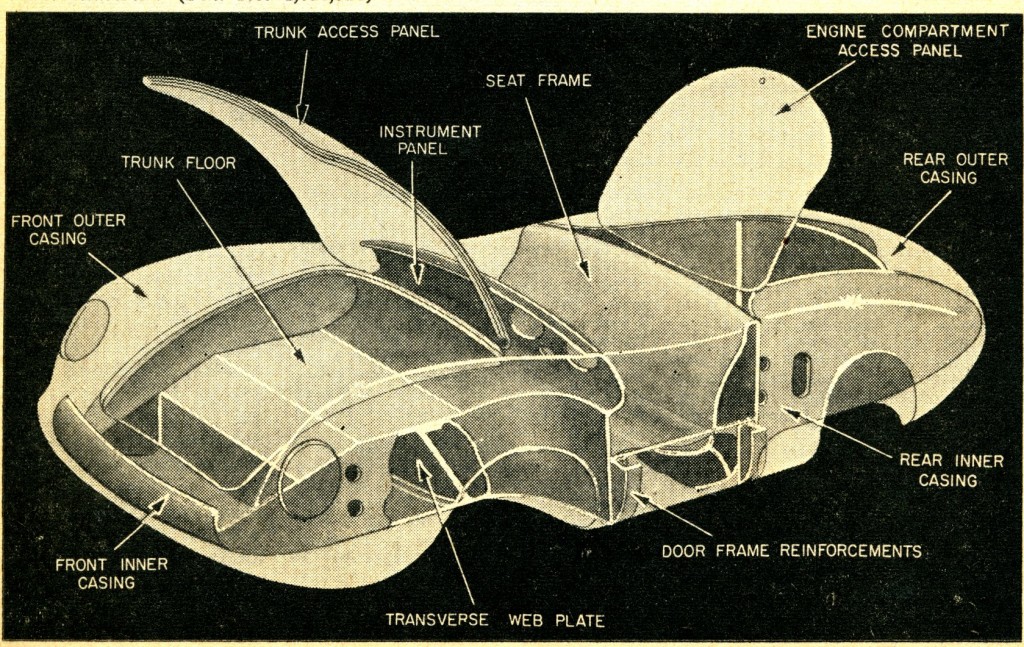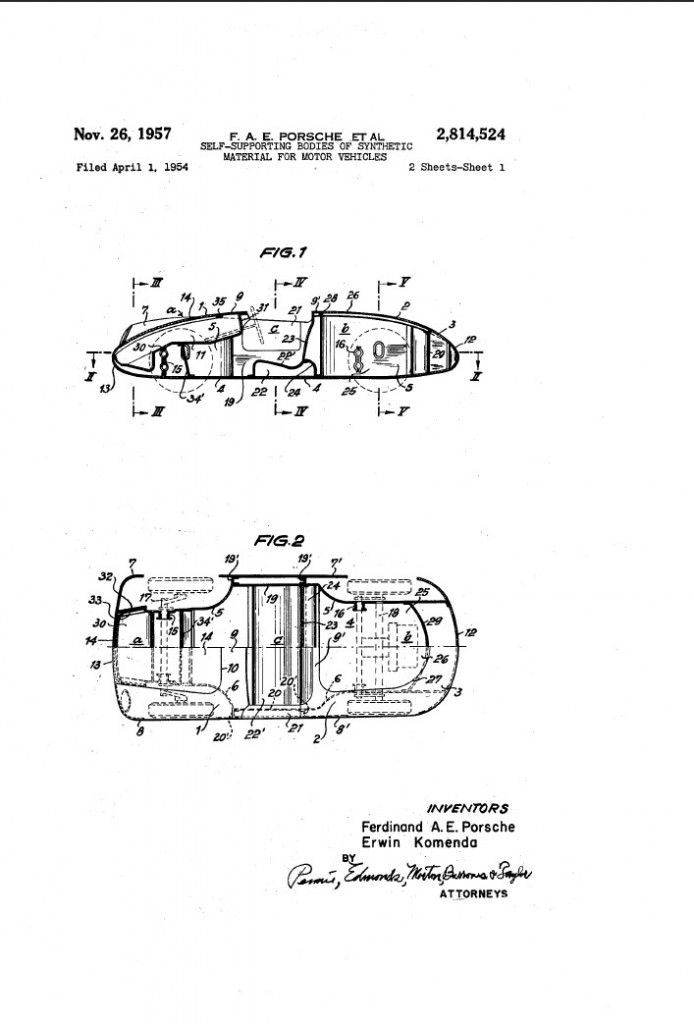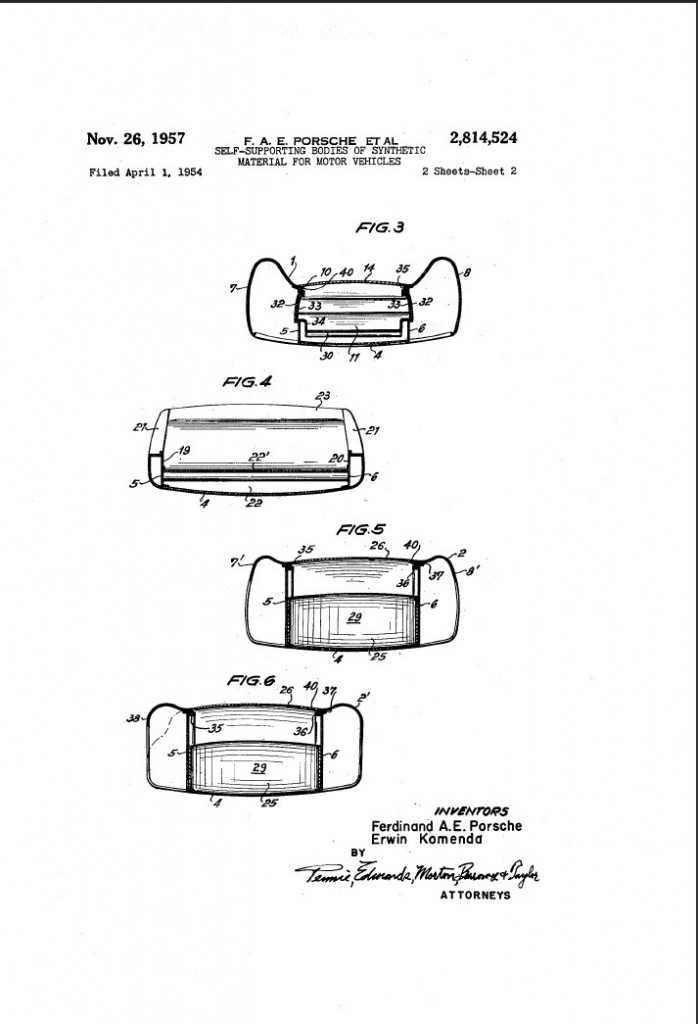
We touch on foreign fiberglass from time to time, and we’ll do this more often in the future as we close the loop and complete the bulk of research into the forgotten fiberglass of the ‘50s and ‘60s. But today’s article caught me by surprise.
Based on the article, Ferdinand Porsche received a patent on November 26th, 1957 for “self-supporting bodies of synthetic material for motor vehicles.”
“Fiberglass bodies,” that is. And the public noticed.
Porsche had originally filed for a patent on this process/body on April 1st, 1954 – during the height of fiberglass body production in the early 1950’s. Science and Mechanics Magazine ran their first story on this in June of 1958. I also tracked down the patent and have included it in the story today.
Let’s check out their article and see what it had to say.
Porsche’s Unitized Plastic Car Bodies
Science and Mechanics: June 1958
Dr. Ferdinand Porsche, legendary genius of automotive design who fathered the Volkswagen s well as the racing Porsches, would appear to be stealing another lap on the competition with his latest U.S. patent – an all-plastic, unitized sports car body.
Formerly, designers seeking the weigh-saving advantages of plastic faced such problems as the lack of expansion compatibility between the material and metal, the need for reinforcing edges and the tendency of plastic to wear away at fastening points with vibration.
Dr. Porsche meets all this be doing away with metal entirely except for the mechanical parts of the car, reinforcing the outer shell with an inner core, bonded to the outer with self-stressed stiffening members of the same material.
Patent Number: 2,814,524
Thanks to the wonders of technology, you can view all U.S. Patents online. Click here if you wish to research patents online and have a look around the history of some pretty cool inventions. You can even enter the patent number above and view the original Porsche patent online, if you wish.
When I keyed in Porsche’s patent number, I quickly located a 6 page document. Below are the 2 pages showing illustrations of what he had patented and had intended (at that time, perhaps) to build.
Summary:
Luckily, I have a few Porsche experts in our group (thanks Harold Pace, Rollie Langston, and Rodney Packwood) and they quickly confirmed that the first Porsche fiberglass car was the 904 produced in limited quantities in the early 1960’s. By most, it was considered a race car. Porsche also created some later race cars in fiberglass, but the common theme of all their fiberglass bodied cars was their strong racing design. Evidently Porsche ” forays into fiberglass” were always on the “racing” side and not the “sports” car side.
So today’s story was new to me – the pairing of “plastic” and “Porsche.” The fact that Porsche filed this as a concept with the Patent Office in early 1954 was pretty impressive. I wonder what that legendary genius Dr. Ferdinand Porsche had up his sleeve?
Perhaps we’ll never know
Hope you enjoyed the story, and until next time…
Glass on gang…
Geoff
——————————————————————-
Click on the Images Below to View Larger Pictures
——————————————————————-
- Nice Skeleton Drawing of The Proposed Design and Build of Porsche Plastic Body.
- Here’s An Anotated Diagram Showing The Major Parts of the Porsche Plastic Unitized Body.













Karl…Glad you enjoyed the article and information….I’m honored you are part of our “Forgotten Fiberglass Afficionados” in every way Keep tuned for any more “Porsche Plastic” stories….I’ll see what more I can find. Best….Geoff
Keep tuned for any more “Porsche Plastic” stories….I’ll see what more I can find. Best….Geoff
Nice one. Geoff!
You have another Porsche expert tuned in to your findings and I haven’t seen this before. Nice to see that Komenda was also credited as it was his job to explore new technologies.
Always something new to find about Porsche!
Ken… Great comments and review of history and thanks for the reference. I’m planning on re-running your article from 1980 – it’s long and I will run it over a few stories. If only we had computers back then – I’d have a Word document to work from, but the same is true of the vintage magazines I cover. Thanks for sharing and glad to have you as part of our group. Geoff
What’s impressive is that Porsche did this shortly after the Corvette went into production in ’53, and greatly preceded the Bayer-Mobay all-fiberglass experimental car of 1966. This car consisted of two structural clamshells of FRP sprayed up inside thermoformed ABS exterior skins, then bonded together at their perimeters, then filled with urethane foam. Uniquely, to get real load transfer between the urethane foam and the FRP shells, Bayer electrostatically flocking the inside of each shell with “Dorix” synthetic fibers. The foam coupled very well to the flocking, and the flocking to the shells. The hood, roof and decklid were all self-skinning rigid urethane. Mechanical parts were attached to bonded-in localized steel reinforcement plates. This was the first technically successful all-plastic, self-supporting chassis for an automobile. Chevrolet tried to emulate this approach in its XP 898, unveiled in 1972. However, Chevy didn’t utilize flocking, and during barrier crash tests, the FRP shells simply split apart and the foam fell out. The Bayer-Mobay car supposedly did far better, absorbing the impact very progressively. If you want to see a partial history of plastic-bodied cars, look up the Feb. 7th 1980 issue of Machine Design magazine.
I think it was Colin Chapman that put this design to market first with the Lotus Elite. The Elite would have made its debut right around the time the article sited in this piece was originally published.
The Elite did use steel sub structures to my knowledge, but it is largely considered the first production fiberglass monocoque in the sports car field.
The interesting thing about this concept is that it is a unitized body made completely of fiberglass. Ironically, all the actual fiberglass cars they produced, starting with the 904, had metal frames of some sort.